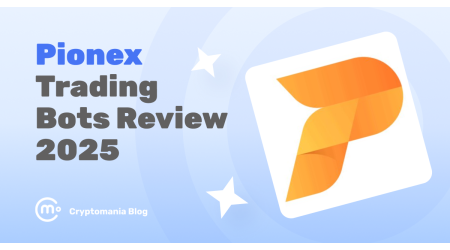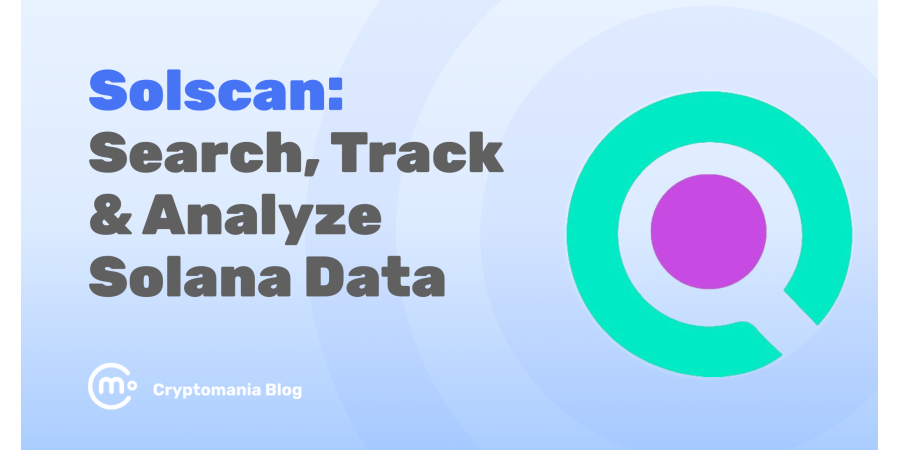
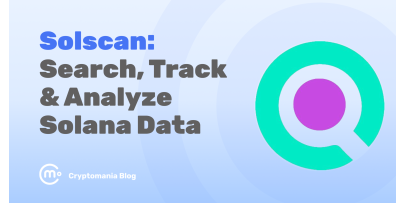
If you’ve ever wondered what Solscan is, it’s basically the go-to block explorer for the Solana network, the same way Etherscan works for Ethereum. It lets you track transactions, wallets, and tokens in real time with full transparency. Backed by major players like Solana Ventures and Alameda Research, Solscan handles over 180 million data requests a month from more than 2 million users.
In this guide, we’ll break down how Solscan works, its key features, pros and cons, and whether it’s worth using for your Solana activity.
Solana brief overview
Before we dig into Solscan, let’s get a quick overview of Solana itself.
Solana, created by Anatoly Yakovenko in 2017, is a public blockchain perfect for scalable applications. It supports smart contracts and is celebrated for its scalability, security, and decentralization. Solana’s unique technologies, like Proof of History (PoH) and Delegated Proof-of-Stake (DPoS), allow it to handle up to 50,000 transactions per second at low costs.
Often called an “Ethereum killer” because of its similar capabilities, Solana is a hot spot for developing dApps and NFTs. It ranks as the 4th largest cryptocurrency, boasting a market cap of $49 billion and a total value locked (TVL) of $1.88 billion. Its booming ecosystem draws plenty of investors and projects, highlighting the need for a tool like Solscan to keep tabs on all the action on the blockchain.
What is Solscan?
Solscan is a web-based tool that offers a comprehensive look at all the happenings on the Solana blockchain. Created by the Solana Foundation, a non-profit focused on advancing open-source blockchain tech, Solscan presents an array of data including transactions, accounts, blocks, and tokens.
It features a user-friendly dashboard that displays real-time updates on DeFi protocols, NFTs, and other key metrics.
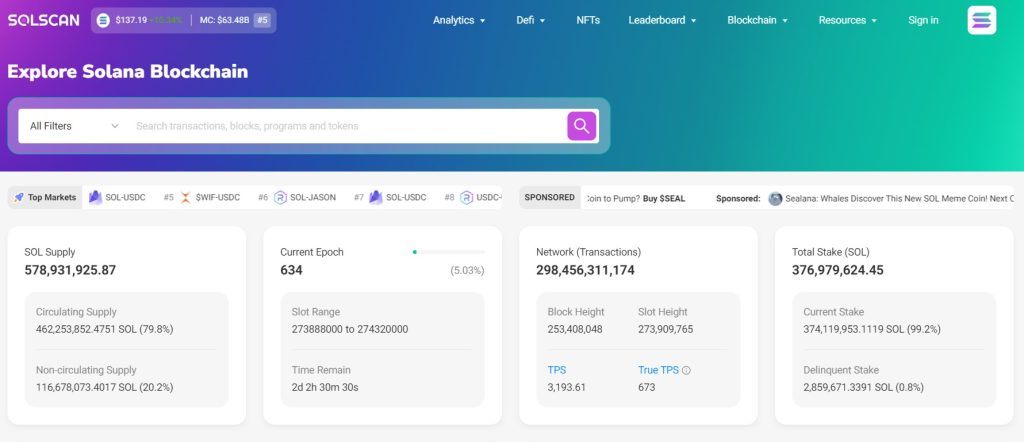
As an open-source project, Solscan breaks down Solana’s complex data into straightforward, digestible information. Users can easily access vital details like contract codes, event logs, token holders, transaction specifics, and account balances.
Moreover, Solscan plays a crucial role in enhancing security. It helps spot vulnerabilities in Solana’s smart contracts and provides real-time monitoring, which is especially useful for crypto holders, investors, developers, or anyone keen on diving deep into the Solana blockchain.
| 👍Pros | 👎Cons |
| Efficient wallet tracking | Not very beginner-friendly |
| Real-time blockchain analysis | Only supports the Solana network |
| User-friendly UI | |
| No account needed | |
| Free access to transaction data |
How does Solscan work?
When you use Solscan to explore the Solana blockchain, here’s how it ensures you get accurate information:
- Data Retrieval: Solscan’s nodes pull data directly from the Solana blockchain.
- Data Organization: This data is organized into searchable and simplified tables in Solscan’s database.
- User Interface: Solscan’s server generates a user-friendly webpage for you to enter your search criteria.
- Query Processing: When you submit a query, Solscan’s API converts it into a format that machines can read.
- Backend Search: The backend server searches the stored data using your query.
- Data Translation: The backend server translates the search results into a human-readable format.
- Result Display: The processed information is displayed on your webpage in an easy-to-understand format.
Solscan key features
Using a block explorer like Solscan can be a game-changer when making transactions on a network. If you’re unsure where your staked funds went or if a transaction is still pending, Solscan can help you track it down.
Solscan pulls all its data directly from the Solana blockchain, ensuring accuracy. It helps you understand the mechanics of the dApps you use and the transactions you make.
Solscan is user-friendly, with a format similar to EtherScan. Many users prefer it over the official Solana Explorer. It’s free and offers various useful tools, lists, and analytical charts. Additionally, Solscan provides public APIs for real-time data access for custom and third-party applications.
Here are Solscan’s main features.
Transaction tracking
By entering the transaction’s unique signature into Solscan’s search bar, you can get comprehensive details about the transaction.

This feature is incredibly valuable for verifying whether a transaction has been completed, checking the transaction status, and understanding the transaction history. It helps you ensure your funds have reached their destination and provides transparency into your financial activities on the Solana network.
Address activity viewing
Input a wallet or blockchain address into the search bar to view the address’s balance and transaction history. This feature allows you to monitor the activity of your own wallet or any other address on the Solana network.
It’s useful for tracking your portfolio, verifying received payments, and analyzing the transaction patterns of other addresses, which can be particularly insightful for traders and analysts.
Token tracking
Search by token name or contract address to get detailed information about specific tokens. This feature helps you verify token authenticity by checking the contract address against official sources like CoinMarketCap.
It’s practical for staying informed about token performance, supply, and distribution, ensuring you’re interacting with legitimate tokens and avoiding scams.
DeFi dashboard
The DeFi dashboard on Solscan’s homepage allows you to explore decentralized exchange (DEX) applications like Raydium, Orca, and Saber.

This feature provides a centralized location to access various DeFi protocols, track liquidity pools, and monitor your investments in these platforms. It adds convenience and efficiency to managing your DeFi activities, helping you make informed decisions and optimize your yield.
NFT dashboard
The NFT dashboard lets you explore available NFTs within the Solana ecosystem, such as DeGods, by clicking on the NFT tab in the website’s header.
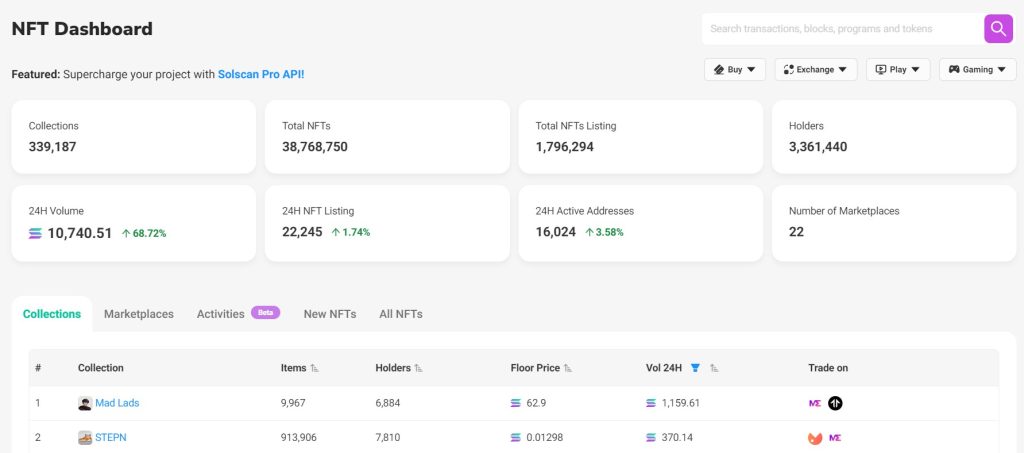
NFT enthusiasts and collectors can find detailed information about NFT collections, ownership history, and market trends. It enhances your ability to discover new NFTs, verify their authenticity, and track their performance in the market.
Fee tracker
The Fee Tracker feature on Solscan allows you to monitor transaction fees across the Solana network. By providing insights into current and historical fee data, this tool helps you understand the cost of transactions at any given time.
This feature is particularly useful for optimizing your transaction timing and cost. For instance, if you notice that fees are lower at certain times of the day, you can plan your transactions accordingly to save money.
Also, Fee Tracker can help developers and dApp users budget their operations more effectively, ensuring they are not caught off guard by unexpected spikes in transaction costs. This feature enhances financial planning and cost efficiency for both individual users and businesses operating on the Solana blockchain.
How to read Solscan?
Solscan is a user-friendly tool packed with features to explore every aspect of the Solana blockchain. To get started, visit solscan.io.
Here’s how to use Solscan to navigate its various features:
Tracking transactions with Solscan
Solscan’s most common use is tracking transactions. Each transaction on Solana has a unique ID signature, a string of letters and numbers found in your smart contract. Enter this transaction ID into Solscan’s search bar on the homepage. You’ll see details like the transaction overview, SOL balance change, and token balance change.
Tracking address activity with Solscan
To monitor activities for a specific wallet or address, paste the wallet address into Solscan’s search bar and press Enter. Detailed information about the wallet’s transactions will be displayed.
Tracking tokens with Solscan
You can also track tokens on Solscan by entering the token name or contract address into the search bar. Select the token from the drop-down options to view detailed information. For accurate results, verify the token address on CoinMarketCap or the token’s official website.
Exploring NFTs with Solscan
Solana hosts a vibrant NFT marketplace. To explore NFTs on Solscan, click on the NFT tab on the homepage or use the search bar to find specific NFTs. Click on an NFT to view details such as addresses, royalties, and current supply.
Solscan’s DeFi dashboards
Solscan offers insights into decentralized finance (DeFi) on Solana through its DeFi Dashboards. Visit the DeFi tab on the homepage to explore various decentralized exchanges (DEX) via the drop-down menu.
Using Solscan, you can easily explore and understand the Solana blockchain, whether you’re checking transactions, addresses, tokens, NFTs, or DeFi platforms.
Conclusion
Solscan makes it easy to explore the Solana blockchain. Like other blockchain explorers, Solscan lets you access almost all the stored data without needing advanced tech skills. It boosts transparency and offers more than just basic transaction and account info. Whether you want to check your wallet balance or research a potential investment, Solscan makes it simple.
But remember, the usefulness of any blockchain explorer depends on how well you can search and understand the data. This guide is an introduction to Solscan and isn’t financial advice. Any projects or accounts mentioned are just examples, not recommendations.




